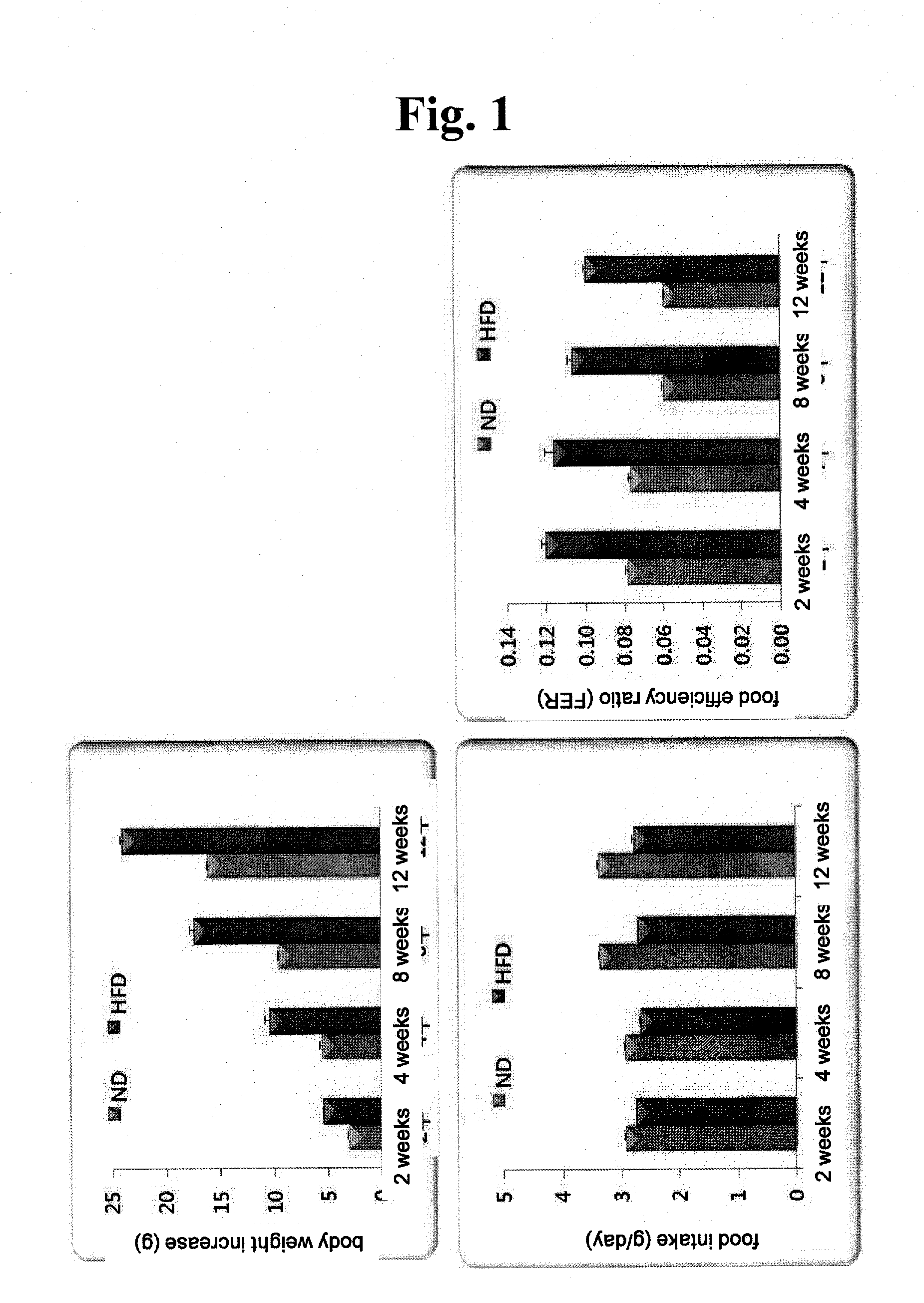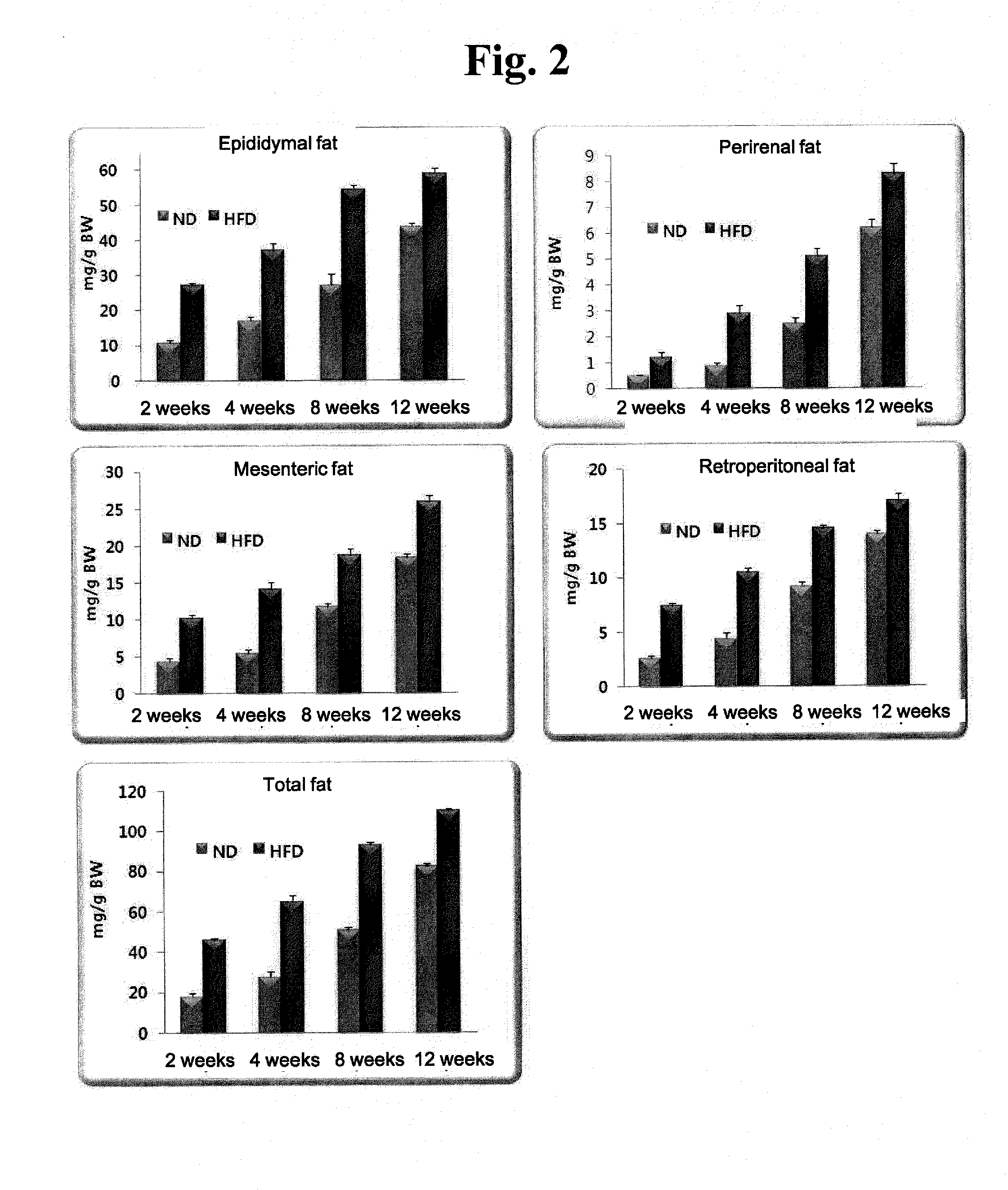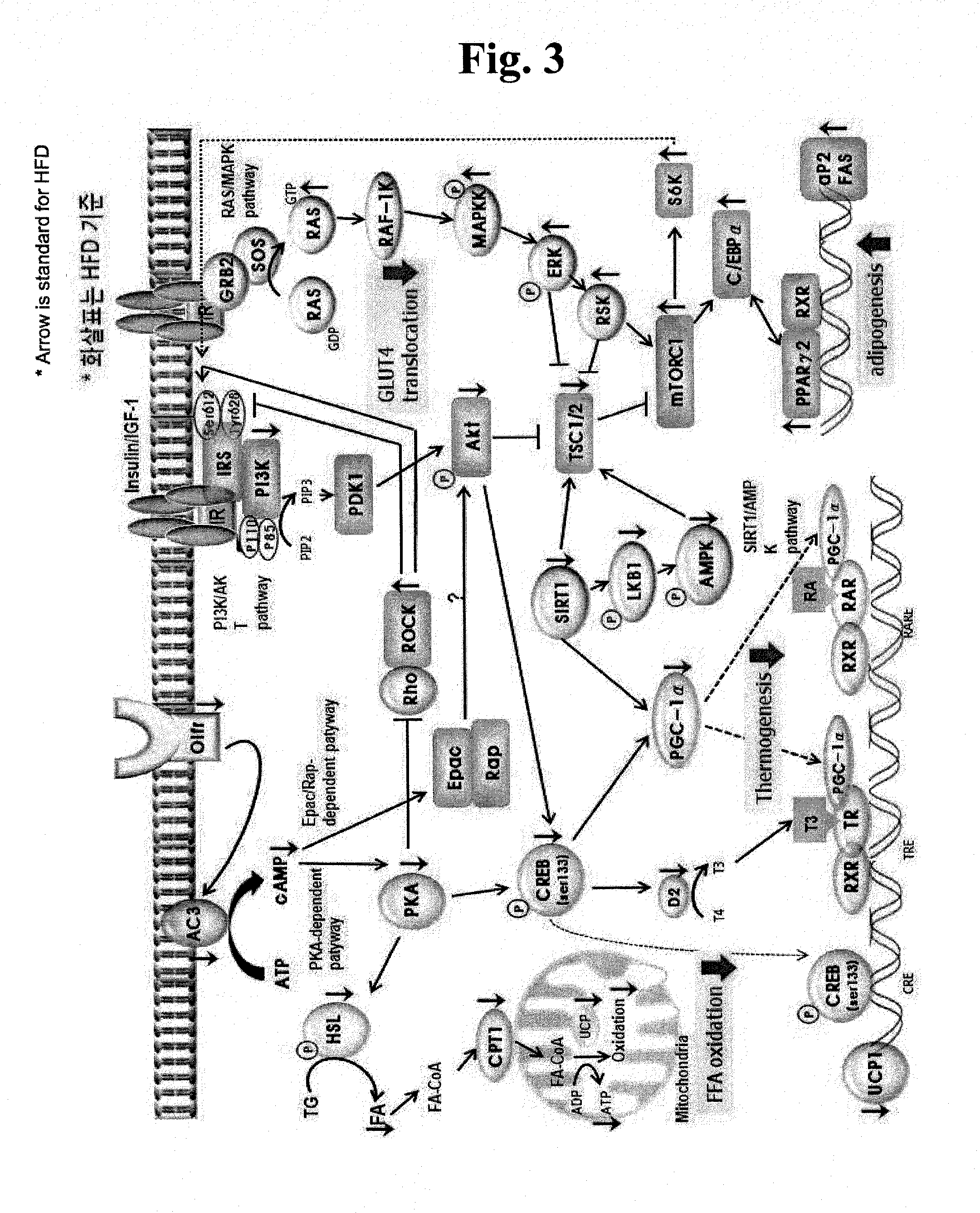Metabolic diseases-related odorant receptor genes and use thereof
a technology of olfactory receptor and metabolic diseases, which is applied in the field of olfactory receptor genes implicated in metabolic diseases, can solve the problems of obesity-related functions of olfactory receptors, and achieve the effect of improving the odor barrier and reducing the risk of obesity
- Summary
- Abstract
- Description
- Claims
- Application Information
AI Technical Summary
Benefits of technology
Problems solved by technology
Method used
Image
Examples
example 1
Profile for Olfactory Receptors in which the Expression is Changed According to High-Fat Diet-Induced Period in Mouse Visceral Fat, Subcutaneous Fat Tissue and Muscular Tissue
[0060]1) High-Fat Diet-Induced Obesity Animal Model
[0061]5-week-old C57BL / 6N mice were fed with high-fat diet (HFD, 20% fat energy) or normal diet (ND) (total 80 mice). At 2, 4, 8 and 12 weeks after the initiation of the study, 20 animals from each group were dissected to obtain sample. The ND was prepared according to AIN-76 rodent diet composition (American Institute of Nutrition, Report of the American Institute of Nutrition ad hoc committee on standards for nutritional studies. J. Nutr. 107: 1340-1348 (1977)). The test diet compositions are shown in Table 1.
TABLE 1Compositions of test dietsNormal dietHigh-fat dietIngredients(ND)(g / kg diet)(HFD)(g / kg diet)Casein200200D / L-Methionine33Corn starch150111Sucrose500370Cellulose5050Corn oil5030Lard—170Vitamin complex1012Mineral complex3542Choline bitartrate22Choles...
example 2
Profile for Olfactory Receptors in which the Expression is Changed by Various Types of Odor Components Having Anti-Obesity Efficacy
[0083]1) Preparation of Test Diets and Maintenance of Test Animals
[0084]The obesity-inducing control diet used in the test was high-fat diet (HFD: 40% fat calorie, 17 g lard+3% corn oil / 100 g diet). Diets supplemented with an odor component had the same composition as HFD, except that each of various types of odor components (indol-3-carbinol, oleuropein, cedryl acetate, α-cedrene and piperine) having anti-obesity efficacy was contained in 0.02-0.05% concentration. Indo)-3-carbinol, oleuropein, cedryl acetate, a-cedrene and piperine were purchased from Sigma-Aldrich.
[0085]The odor component used in this experiment is a phytochemical present in various types of edible plants. It has been used as food additives (flavoring agents) at home and abroad. In addition, the present inventor has found that the odor component has effects for decreasing body weight a...
example 3
Obesity and Metabolic Diseases-Related Gene Expression Changes by the Intake of Odor Components Having Anti-Obesity Efficacy
[0100]1) RNA Extraction Using Trizol Method and RT-PCR
[0101]After adding 1 mL of Trizol agent (Invitrogen, USA) per 0.1 g of visceral fat or liver tissues, the mixture was homogenized and centrifuged at 12,000×g for 10 min at 4° C. The supernatant was transferred to a new tube and 200 μl of chloroform was added to the tube, followed by vortexing. The same procedure was repeated twice and then the supernatant was transferred to a new tube, followed by addition of isopropanol and the supernatant at 1:1 ratio. The mixture was vigorously shaken 10 times and then incubated for 10 min at room temperature, followed by centrifugation at 12,000×g for 10 min at 4° C. to remove the supernatant. After adding 1 mL of 70% ethanol to the remaining pellet, it was centrifuged at 7,500×g for 5 min at 4° C. After removing the ethanol, the RNA pellet contained in the tube was drie...
PUM
| Property | Measurement | Unit |
|---|---|---|
| pH | aaaaa | aaaaa |
| temperature | aaaaa | aaaaa |
| size | aaaaa | aaaaa |
Abstract
Description
Claims
Application Information
 Login to View More
Login to View More - R&D
- Intellectual Property
- Life Sciences
- Materials
- Tech Scout
- Unparalleled Data Quality
- Higher Quality Content
- 60% Fewer Hallucinations
Browse by: Latest US Patents, China's latest patents, Technical Efficacy Thesaurus, Application Domain, Technology Topic, Popular Technical Reports.
© 2025 PatSnap. All rights reserved.Legal|Privacy policy|Modern Slavery Act Transparency Statement|Sitemap|About US| Contact US: help@patsnap.com



